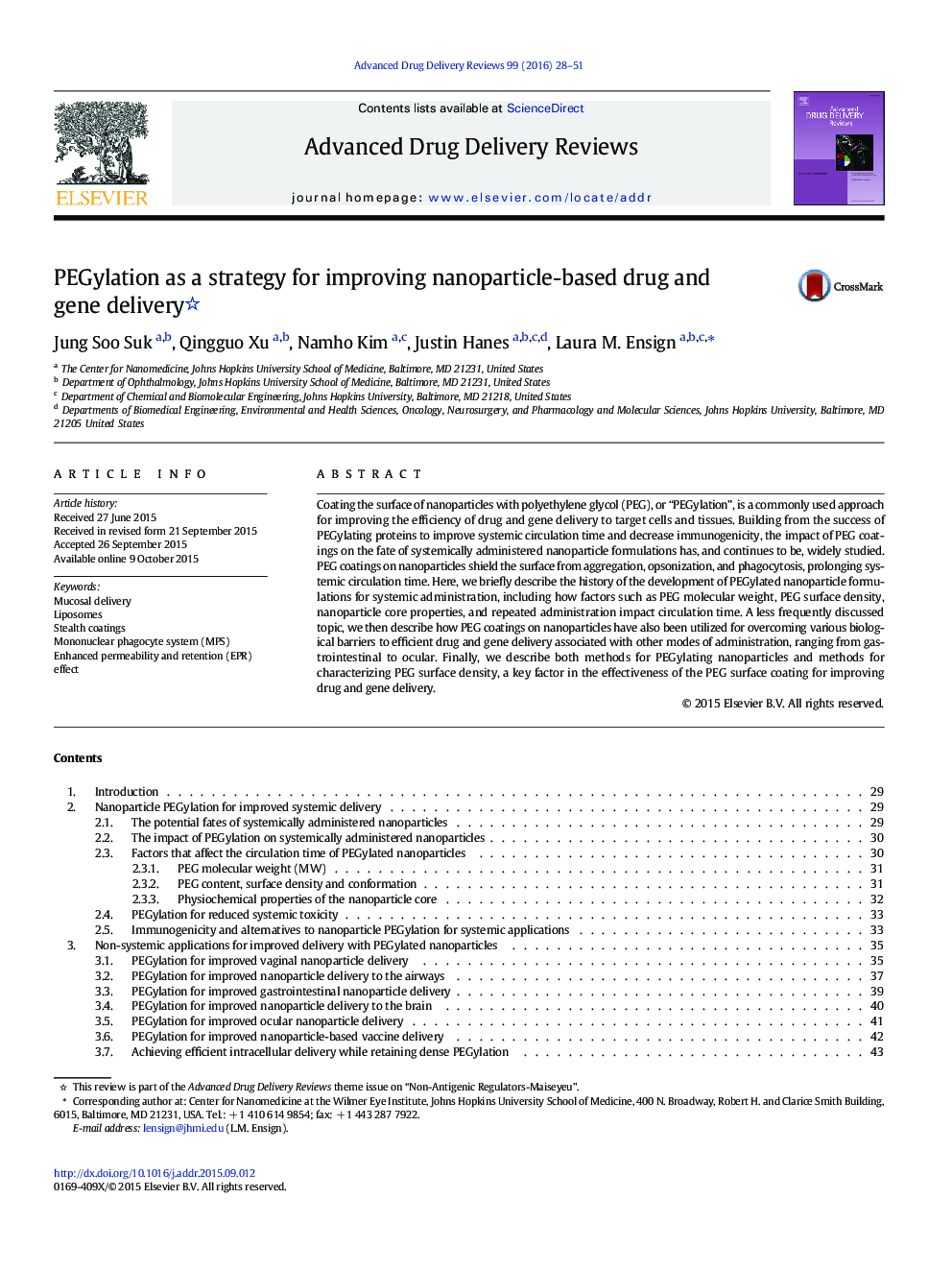| Article ID | Journal | Published Year | Pages | File Type |
|---|---|---|---|---|
| 2070729 | Advanced Drug Delivery Reviews | 2016 | 24 Pages |
Coating the surface of nanoparticles with polyethylene glycol (PEG), or “PEGylation”, is a commonly used approach for improving the efficiency of drug and gene delivery to target cells and tissues. Building from the success of PEGylating proteins to improve systemic circulation time and decrease immunogenicity, the impact of PEG coatings on the fate of systemically administered nanoparticle formulations has, and continues to be, widely studied. PEG coatings on nanoparticles shield the surface from aggregation, opsonization, and phagocytosis, prolonging systemic circulation time. Here, we briefly describe the history of the development of PEGylated nanoparticle formulations for systemic administration, including how factors such as PEG molecular weight, PEG surface density, nanoparticle core properties, and repeated administration impact circulation time. A less frequently discussed topic, we then describe how PEG coatings on nanoparticles have also been utilized for overcoming various biological barriers to efficient drug and gene delivery associated with other modes of administration, ranging from gastrointestinal to ocular. Finally, we describe both methods for PEGylating nanoparticles and methods for characterizing PEG surface density, a key factor in the effectiveness of the PEG surface coating for improving drug and gene delivery.
Graphical abstractDownload high-res image (160KB)Download full-size image
